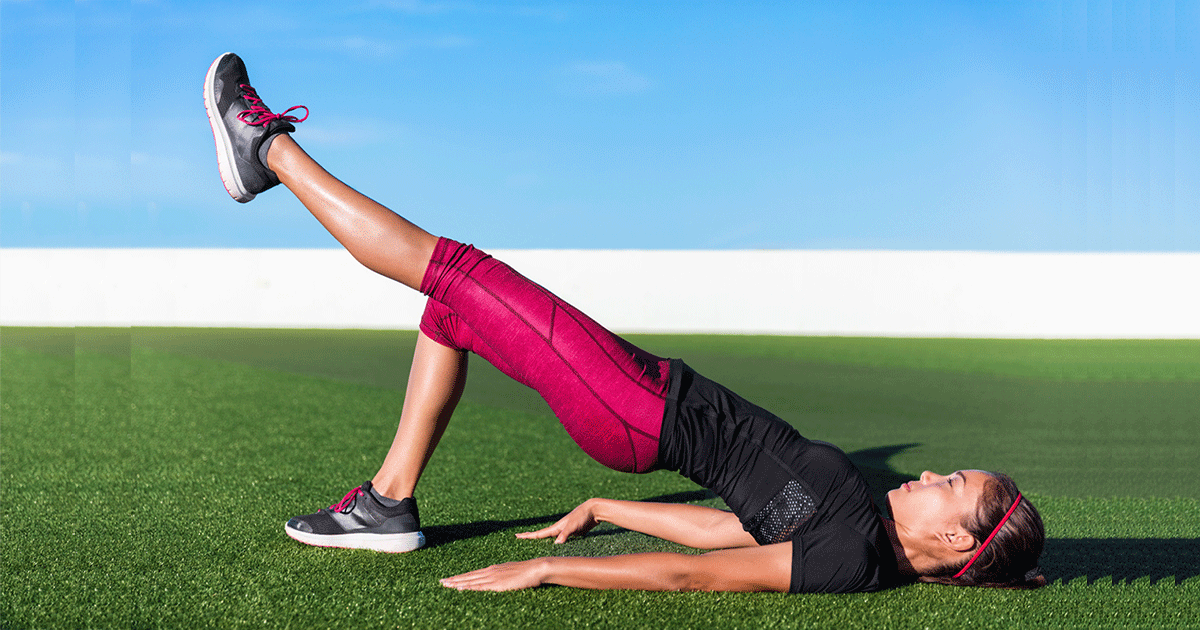How Isometric Exercise Can Improve Your Mobility
Advice to improve your movement, fitness, and overall health from the world's #1 in orthopedics.
Physiologists use the term “isometric” for an action that causes a muscle to contract but does not generate movement. (Think of doing a plank or propping yourself up against a wall with outstretched arms.) The tension causes muscle and nerve fibers in the area to fire, which over time can help improve range of motion.

Unlike the two other forms of muscular movements—concentric, which involves the shortening of muscles under tension, such as a flexed biceps; and eccentric, which allows for the gradual lowering of load, such as a barbell during a squat—isometric exercises do not produce inflammation or irritation of the tissue. The result is a much gentler yet highly effective workout, said Daniel Supple, PT, DPT, CSCS, a physical therapist at HSS. “Isometric exercise can trick your brain into allowing you to establish a wider range of motion,” Supple explained.
Isometric exercises will not help a person bulk up, and their effect on strength is modest, although over time small gains are possible. But evidence suggests isometrics may have wide-ranging effects on the body, including a reduction in blood pressure that is more significant than that associated with high-intensity training, Supple said.
Who Should Do Isometric Exercises
Anyone who wants to gain mobility can benefit from a routine that incorporates isometric exercises. “I’ve used isometric loading to help with range of motion in a variety of situations,” Supple said. “Once you get that gain, you can capitalize on it in your strength training.”
In that sense, isometric exercise acts as a window into the future of your workouts. “It’s a good thing to do to create more awareness of your body,” Supple said. “It lets you know what you’re supposed to be feeling when you’re getting started with exercise.”
Particularly for patients rehabbing after joint replacement surgery or injury, improved range of motion is critical, Supple said. In the early weeks after a procedure, aggressive eccentric exercises may lead to reinjury of the joint. For that reason, patients often start with a regimen of isometric movements that concentrate on the affected part or parts of the body.
Isometric Exercises after Joint Replacement or Injury
When working with people who have had surgery to repair or reconstruct a torn anterior cruciate ligament (ACL) in the knee, for example, swelling of the joint inhibits range of motion.
“The first thing I do with someone who had ACL surgery is isometric work to help them regain muscle contraction,” Supple said. Early on, “the body can’t tolerate high loading or contraction, and the swelling around the joint and in the quadriceps muscle causes the nerves in the area to lose signaling. We do a lot of isometrics to help bring back awareness in the tissue.”
To activate the quads, Supple may have the patient sit on the floor with their legs extended and a rolled-up pillow or towel under the knees. He asks them to squeeze the towel with their legs for intervals of 10 seconds, up to 100 times or more per day.
He also may have the patient sit on the end of a bed and try to push their lower legs against him as he resists, for 60 seconds or so, to increase the efficiency of their quadriceps, the largest muscles in the legs. “By trying to kick into me, they meet my resistance but don’t move, and that brings firing back to the muscle tissues,” he said.
Isometric Exercise Examples
Quad Set
For this exercise, place a rolled towel under your knee and squish the towel while tightening the muscles around your knee as hard as you can. Hold for 10 seconds.
Plank
Keeping your body in an even line with your forearms on the ground, lift your torso up and brace your core as if you are preparing to be hit. Hold for as long as you can without any movement.
Knee Extension
Using an exercise band looped around a chair leg and your ankle, kick outward and hold. (The amount of time will depend on whether you have an injury and your training history.)
Published 4/29/2024





